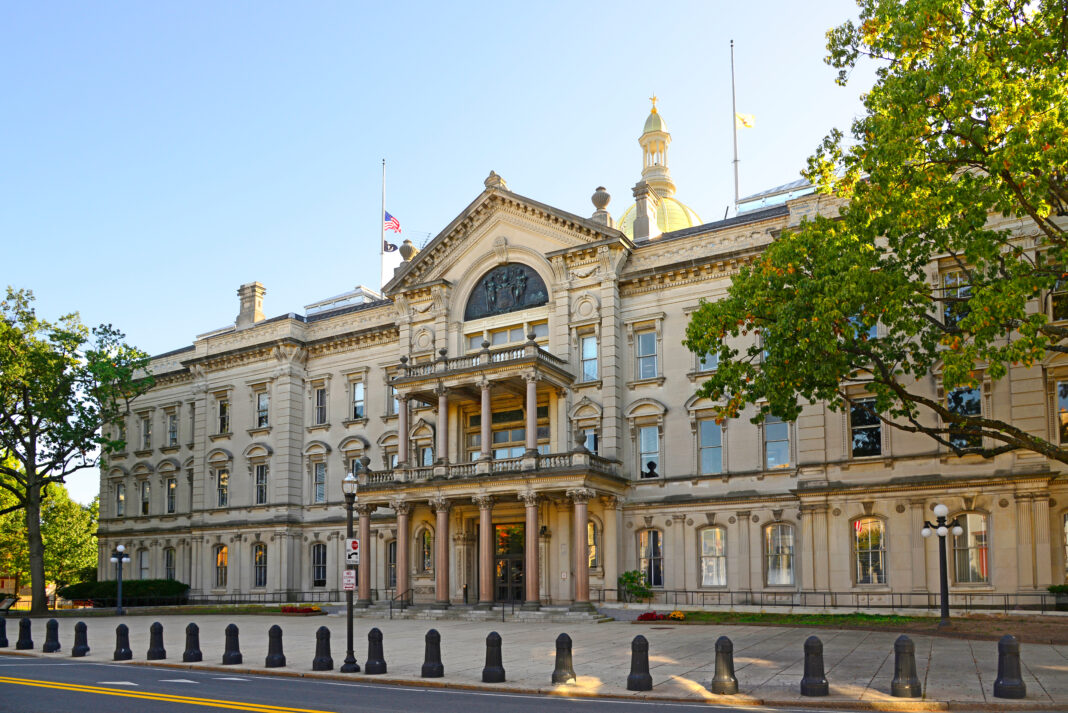The New Jersey Board of Public Utilities’ (NJBPU) March 13 Public Stakeholder Meeting was supposed to be the public’s first view of the draft of the 2024 Energy Master Plan (EMP), the “State’s blueprint to achieve 100% clean energy by 2050.” The EMP is a critically important document that sets state energy policy regarding the production, distribution, consumption, and conservation of energy in the state for the next five years. It affects the daily lives of NJ residents in myriad ways – how they heat, cool, and power their homes, how they get to work, what kind of stove they can buy, and how much of their monthly budget will go towards paying for energy.
So after the 2019 Energy Master Plan (released in 2020) boldly shifted away from fossil fuels and towards renewable energy sources like offshore wind and solar, many were interested in what the next Energy Master Plan (originally scheduled for 2024) would bring. After all, many of the near-term goals of the 2019 Energy Master Plan had been missed; energy storage goals, EV adoption goals, offshore wind goals, etc… Plus, the 2019 EMP asserted that the clean energy goals could be met in part because statewide energy usage was dropping.
A lot has changed in five years. Artificial Intelligence (AI), EVs, building electrification and other technologies are now expected to cause a spike in energy demand. And one by one, offshore wind companies abandoned plans to develop wind farms off the Jersey Shore. Orsted withdrew in fall of 2023. Shell withdrew in January 2025. As of publication, EDF Renewables’ 2.8GW Atlantic Shores project is on life support due to Shell’s withdrawal from the project.
With all of this in mind, there was keen interest in the draft of the 2024 Energy Master Plan and its unveiling at the March 13 Public Stakeholder Meeting. The hope was that the 2024 draft EMP would recognize the missed goals and missteps of the previous plan and chart a path forward based on these new realities. And, just weeks after watching the NJBPU approve increased electricity rates (for the 7th consecutive year), there was hope that the EMP would seriously address the issue of cost; the 2019 EMP did not include ratepayer costs.
But what was presented at the meeting by consultant Energy+Environmental Economics (E3) was not a complete draft, but instead a short slide presentation titled, “Executive Summary DRAFT”, or, as NJBPU called it in their public notice of the meeting, “Overview of the draft 2024 Energy Master Plan”. Just 62 slides of charts and graphs. No backing or support data for others to analyze and provide constructive feedback on.
As a point of comparison, the Draft 2019 New Jersey Energy Master Plan was 108 text pages (not slides) with 4 pages of endnotes and is based upon the 2019 Integrated Energy Plan (IEP) which was 124 text pages with 19 pages of sources, references, and notes that could be independently reviewed. By their own benchmark, the “Overview of the draft 2024 Energy Master Plan” is woefully inadequate.
The public comment period for this “Overview of the draft 2024 Energy Master Plan” was originally set to end March 27 but has been moved to May 1. Public comments may be submitted via this link (https://publicaccess.bpu.state.nj.us/CaseSummary.aspx?case_id=2112714) or via email to [email protected].
The final 2024 EMP was originally scheduled for Q4 2024. At publication date, it is unknown when it will be released.



![‘Startlingly high’ levels of PFAS pollution found in Warren County hot spot [NJ Spotlight]](https://tristateinfrastructurenews.com/wp-content/uploads/2025/03/PFAS-in-Washington-Twp-Google--1068x527.png)
![This I-95 bridge connecting N.J. and Pennsylvania could be replaced soon [NJ.com]](https://tristateinfrastructurenews.com/wp-content/uploads/2025/03/I95-Delaware-River-Bridge-Google-1068x597.png)